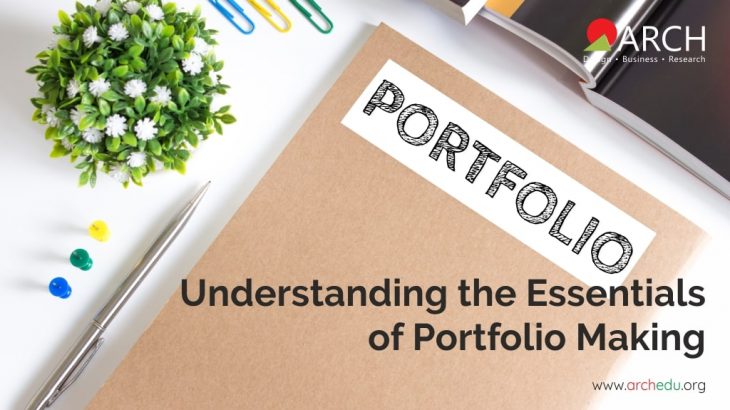A portfolio is a document that showcases the work of a design professional. It’s a collection of their best projects. To work with an organization in the design industry or to score with your favorite client, it is important to have an attractive portfolio that is carefully curated to project your professional capabilities and image in the best way possible.
Getting started with portfolio making:
With regards to selecting projects for your portfolio, quality always beats quantity. Think about this from the employer’s perspective; what would you rather prefer: A huge collection of irrelevant works with no connection between them or a series of projects that follow a theme, tell a story and reflect your strengths? There’s no doubt that the latter sounds better.
At the end of the day, you’re always going to be defined and recognised by the best of your works, works that are worth remembering. Those works should not be arranged in a clutter or misrepresented in any form.
So here are 4 quick things that you can keep in mind when you get started with your portfolio:
1. Select the strongest pieces:
First things first, you should always try to include all the splendid, riveting designs in your portfolio. Show the broadness of your experience by including an assortment of projects. Refrain from incorporating designs that you’re not very happy about. Your portfolio is a workmanship show, not a spot to dump pictures. Showing your best designs doesn’t end with a few pictures. You should use the opportunity to show what your designs accomplished and how.
2. Be thoughtful of how you present your work:
Imagine you’re a business owner searching for an interior designer with experience in the design of Cafes. You’ve narrowed your options down to two individuals. Both have appealing café work in their portfolios, and you love what you see. Nevertheless, one designer manages to stride further and be selected. Why?
The individual you may choose to design your new Café didn’t just transfer lovely pictures to their portfolio. They made the effort to narrate the story behind their designs.
In effect, portfolio pictures and visuals should be accompanied, with a clear communication of the client’s brief and how the design accomplished the desired objectives that were set out. Additionally, such a designer tends to incorporate an itemized synopsis of the outcomes from each project undertaken so that potential employers can actually see and appreciate the upward growth of businesses due to the design inputs. This quite definitely and positively influences their decisions to hire you over someone else !
3. Set a tone/theme:
You don’t necessarily need to transform every portfolio project into a contextual work. Try to attach a feeling of what was associated with each design that shows up in your portfolio. Try to share the feeling of the design’s motivation and what it accomplished. You can arrange designs with similar contexts together.
An inspiring tone will charm the viewer.
4. Consider digital versions/cloud platforms:
Designers are known to be up to date with tech innovations and efficient workflow management. Keeping that in mind, your portfolio should always be accessible via computers and smartphones.
In case you’re a realistic or modern designer with no coding experience, you can explore a platform (like dropbox or portfolio box) that requires no coding. Be that as it may, on the off chance that you have a web or UX foundation, your portfolio is an opportunity to flaunt your coding capacity.
Don’t think you have enough projects to showcase yet? It might be just the right opportunity:
If you’re an aspiring design professional, not having a portfolio may be more beneficial than having a bad portfolio. Sounds strange?!
If you don’t have a portfolio you have the opportunity to make one. It’s a blank canvas that you can fill without the risk of making a mistake. And if you take all the parts above into consideration, there’s not much that can go wrong.
Before students start their academic journey at Arch College of Design & Business, they’re screened for their awareness, perspectives and opinions, and their eye for detail, more than their drawing or other design-related skills. Skill sets we feel, can always be acquired with proper training and guidance, but prosperity in the design industry is always proportional to the designer’s awareness, attitude and approach towards extending creative boundaries. We believe in encouraging aspirants with a valid attitude for design. The journey at Arch then enables them to become a design thinker and create remarkable portfolios.
As an institution, Arch College is involved with many national & international projects, initiatives, collaborations & partnerships. This extends a large number of varied opportunities to design aspirants for participation, and in the process get exposure, and eventually the chance to add meaningful and inspiring experiential content to their portfolios.
